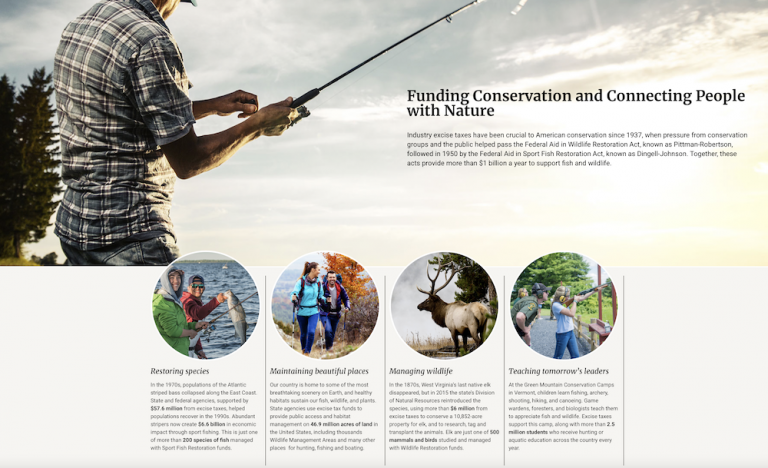Partner with a Payer
Tom Decker, wildlife biologist and USFWS lead for the Partner with a Payer program, said P-R funds are fundamental in growing the industry, sustaining wildlife populations and meeting the mission of all state fish and wildlife agencies. That’s why he works to increase the understanding between manufacturers who pay excise taxes and state agencies who use them.
The Partner with a Payer program was created from conversations between USFWS staff and industry partners who recognized many manufacturers didn’t understand why they pay FET, nor did they understand what was being achieved with the money. The national initiative was designed to strengthen partnerships and increase collaborations between state agencies and manufacturers by holding two types of events. The first is field tours, which allow manufacturers to see excise tax-funded projects that demonstrate how their contributions are being used effectively. The second is facility tours, which allow state and federal agency staff to visit industry facilities to learn about the processes manufacturers use to make products that are taxed to provide critical funding for their fieldwork.
The program is focused on explaining what a FET dollar does, not how it travels through the system, as described in the cycle of success model used above. The shift in storytelling helps everyone involved see the legacy investment industry members make in conservation.
“For decades (manufacturers) have been funding conservation,” Decker said. “That conservation work is huge and unparalleled in any other country. It’s amazing what we’ve been able to achieve in America with this funding system. They should be aware that they’re part of the equation in conserving wildlife and providing opportunities for the public to hunt and target shoot. Their role is huge. As a partnership, it’s important for each entity to know how the other contributes.”
Everyone Can Get Involved
Although manufacturers and state agencies are the most involved in the FET equation, retailers, other ATA members and individual consumers can get involved, too. Richard Zane is a USFWS fish and wildlife biologist who manages and oversees grants in 13 states. He said people can contribute to the process, even if they don’t pay excise tax dollars.
In order for states to receive federal allocations, they must pay a match of nonfederal funding. Land purchased for ranges and range construction or expansion projects require a 10% match, while all other projects require a 25% match. Most states use money generated by license sales to pay the match, but Zane said the funds don’t have to be a direct match in dollars.
“We accept a volunteer match,” he said. “There’s a lot of interest in archery and we see more and more nongovernmental organizations partner with states to volunteer their time as mentors. A lot of people feel they can't mentor because they’re not archery experts. Mentors don’t have to be experts; they just have to be willing to help others participate. These contributions help agencies start programs and provide participants with the support they need.”
Companies and individuals can also make financial donations to archery programs within their state if they can’t commit their time or resources. Visit the ATA’s “State Contacts” webpage to find contact information for state directors and coordinators who oversee various archery programs, including NASP and Explore Bowhunting, in their state. Ask for volunteer information or instructions regarding how to donate to a specific project.
Regardless of the contributions made by individuals, manufacturers or state agencies, FET funds and FET-funded efforts are vitally important to the future of conservation and our hunting heritage.
ATA members should contact Josh Gold, ATA’s senior manager of R3 and state relations, to learn more or get involved with the Partner with a Payer program. He can be reached at (507) 233-8145 or joshgold@archerytrade.org.




